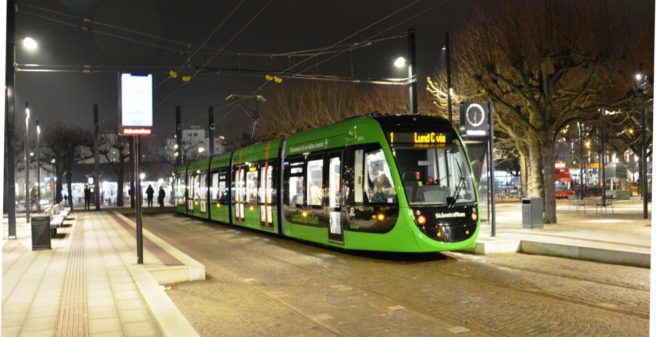
The revival of the classic tramway with state-of-the-art technology as the epitome of environmentally friendly urban transportation occurs in most cases through the reintroduction of tramways in cities which used to operate them before and had closed them down decades ago. Not so in Lund in Southern Sweden: Inner-city rail transport has never been here before.
The city with its 85.000 inhabitants (105.000 in the greater area) is largely influenced by its innovative university and its various institutions. The Europen Spallation Source (ESS) as a modern science exploration center is also located here. Plans to further improve the public transport services of the city had already lead to the introduction of a Bus Rapid Transit (BRT) system, which uses its own right of way on a significant portion of the city’s public roads. The BRT route from the city center to the university district and beyond was opened-up in 2003 already, and remarkably, the alignment of the BRT was already prepared for the possible conversion to tramway operations at a later stage. This actually happened some 15 years later.
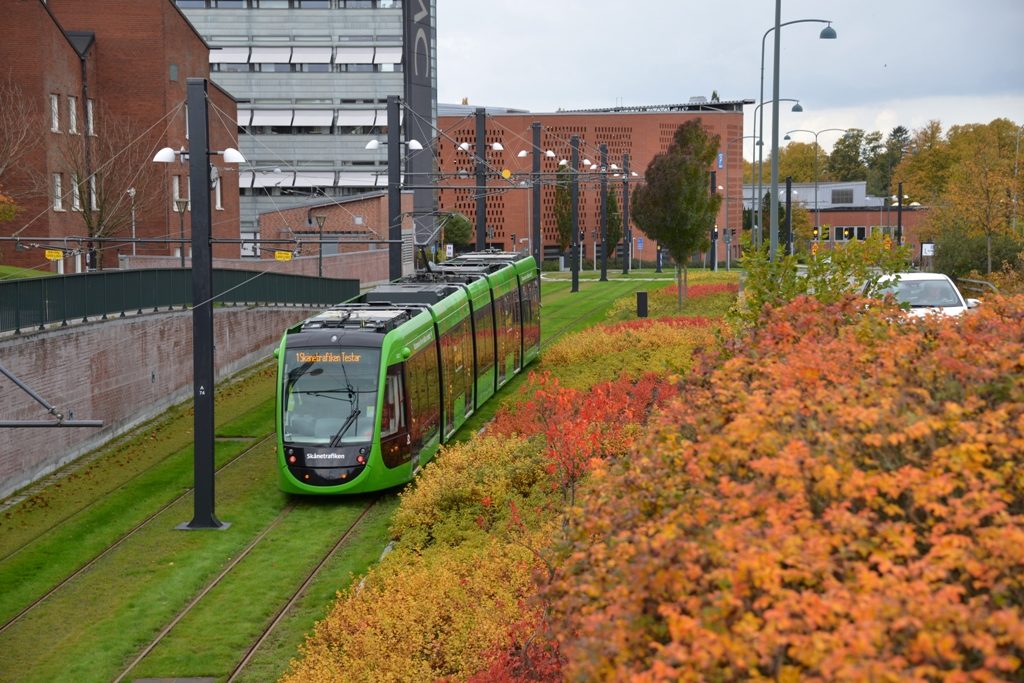
In order to get to the “next level”, i.e. more attractive services to meet the increasing passenger demand, a tramway project was launched. In stark contrast to similar projects in the two larger cities in the region, Helsingborg and Malmö, which opted for the introduction of BRT models using hybrid or electric buses, the tramway plans of Lund were fortunately realized.
The tramway project
Lund planned and built a 5.5 km long, double track line on standard gauge, with all characteristics of a modern, low-floor access tramway. The route starts at the central railway station next to the Clemenstorget market, runs through different university installations and faculties including the University Hospital, crosses a motorway, connects the new housing district of Brunnshög, which is still under development, and terminates at the ESS. Another 700 meters of single track are used only as a service link to the newly built depot facilities located here in the Northeastern part of the city. It is worth to be mentioned that parts of the line run like an interurban tram through areas where new housing districts are yet to come – the future citizens who will be living in these areas in the near future will enjoy a direct access to a high-quality public transport service right next door – a city development project which offers all attributes of an integrated, environmentally- and user- friendly concept of living.
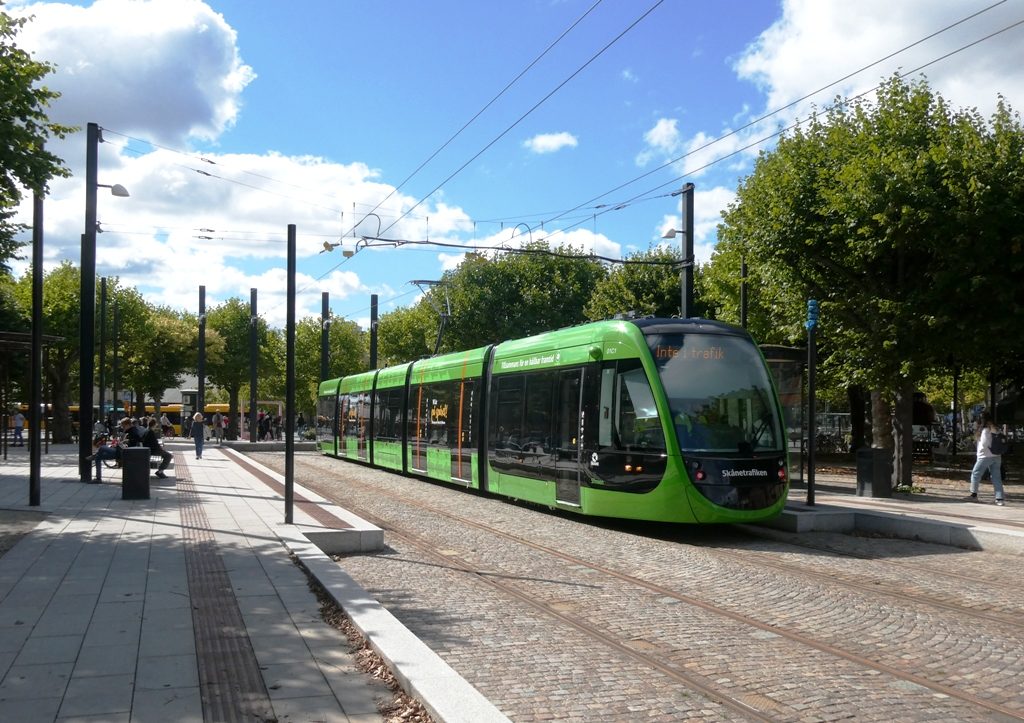
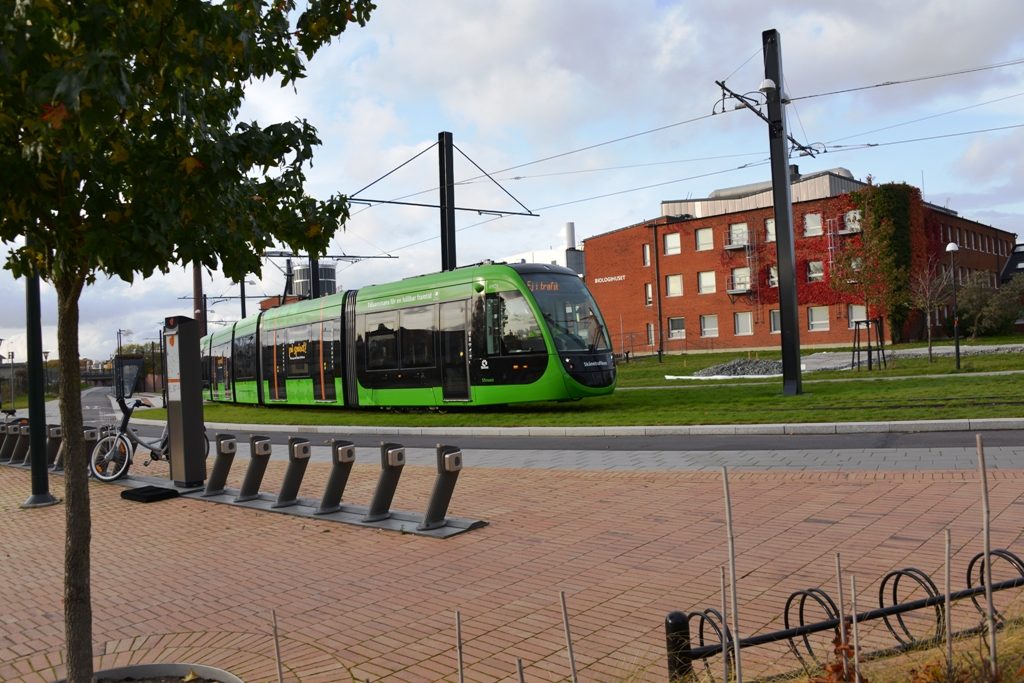
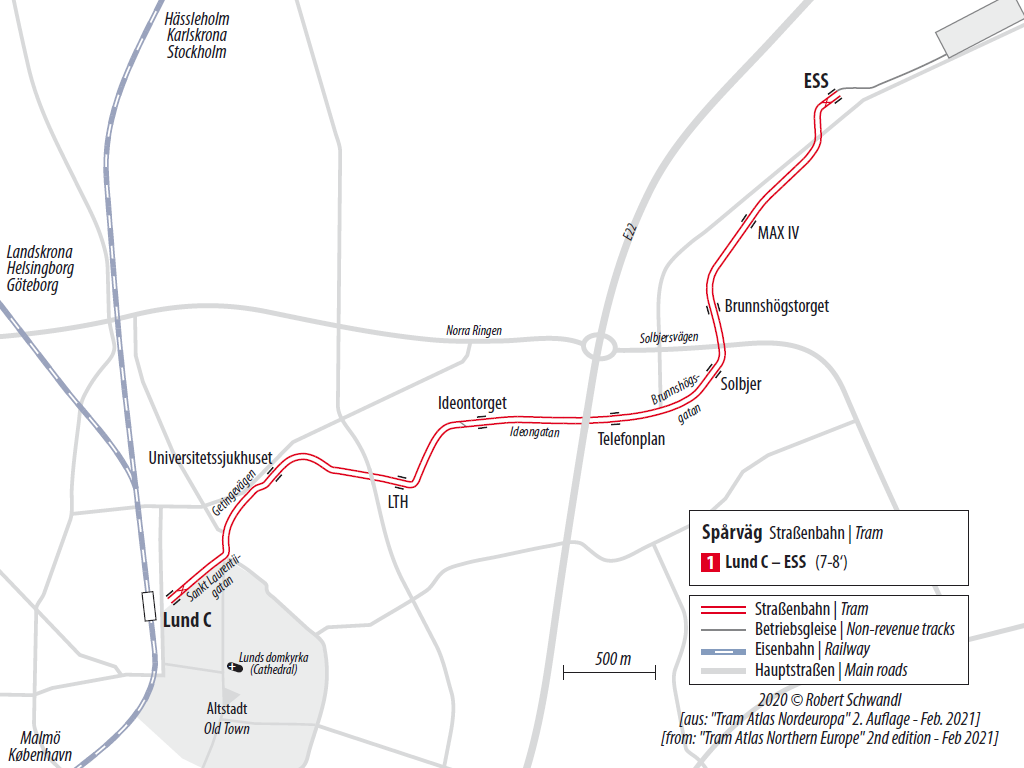
The tramway is built and owned by the city of Lund jointly together with the Skane region. The rail infrastructure is owned by the city, while the depot as well as the rolling stock belong to the regional administration. For the time being, Nettbus, the city’s bus operator, is also responsible for the tramway operations. In 2023, a new long-term operating contract will be awarded to the winner of a tender process which will be conducted in that year.
The rolling stock
Spanish CAF group won a supply and service contract for the delivery of seven low-floor bi-directional tramcars of its well-known URBOS series. Additional options were signed for another three trams as well as for an optional prolongation of the trams from five to seven modules which would increase the total length of the vehicles from currently 32 meters to 40 meters. The tramways have six doors on each side and offer a passenger capacity of max. 200. The first tram was delivered in late summer 2020 and started test runs shortly afterwards.
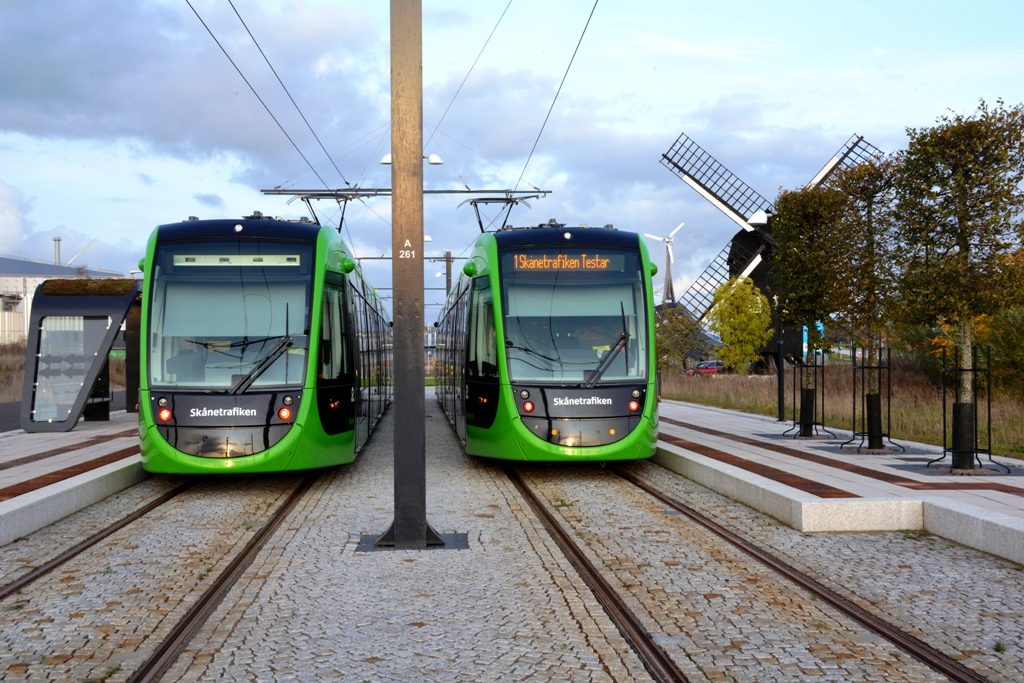
Inauguration today!
The official – virtual – opening ceremony took place today on 12 December 2020, and revenue service is going to start one day later on 13 December 2020. The intial frequence on the new line is quite limited, with just three vehicles on the route providing a tramway service every 20 minutes during the day. However, a higher frequence is coming soon, on 1 February 2020, with a 10 minutes headway during the day with an enforcement to 7-8 minutes during peak hours. A maximum of 5 vehicles would be needed given a total travel time of 15 minutes.
The total investment cost amounted to approximately SEK 1.26 bn (approx. EUR 123 mn) including infrastructure, street remodelling, the depot facilities as well as the seven trains. National and regional funds helped to finance the entire project which will certainlybecome a showcase for other urban areas.
In the future a southbound extension of the tramway is considered, starting at Clemenstorget via the old town center. This would be a viable option once the success of the first line justifies further investments. Let’s be optimistic.
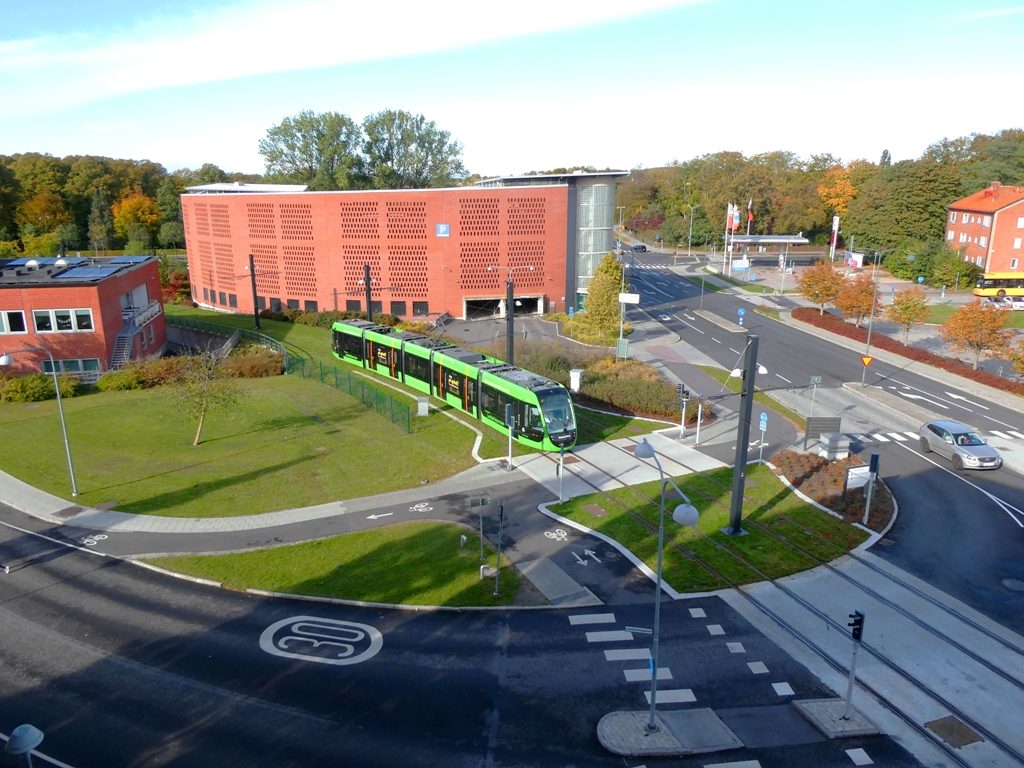
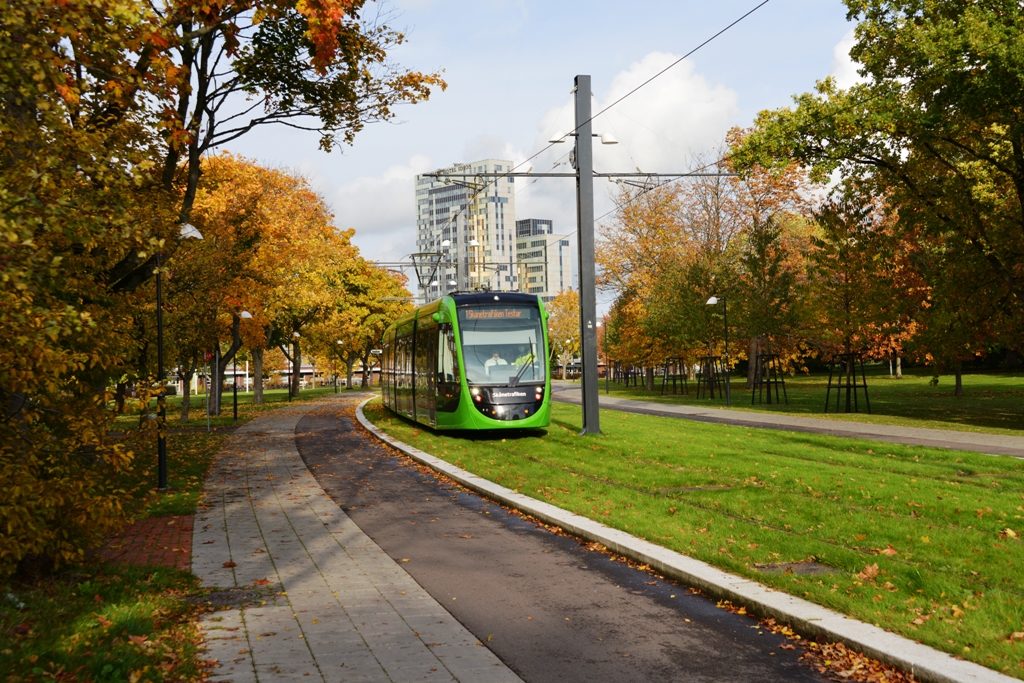
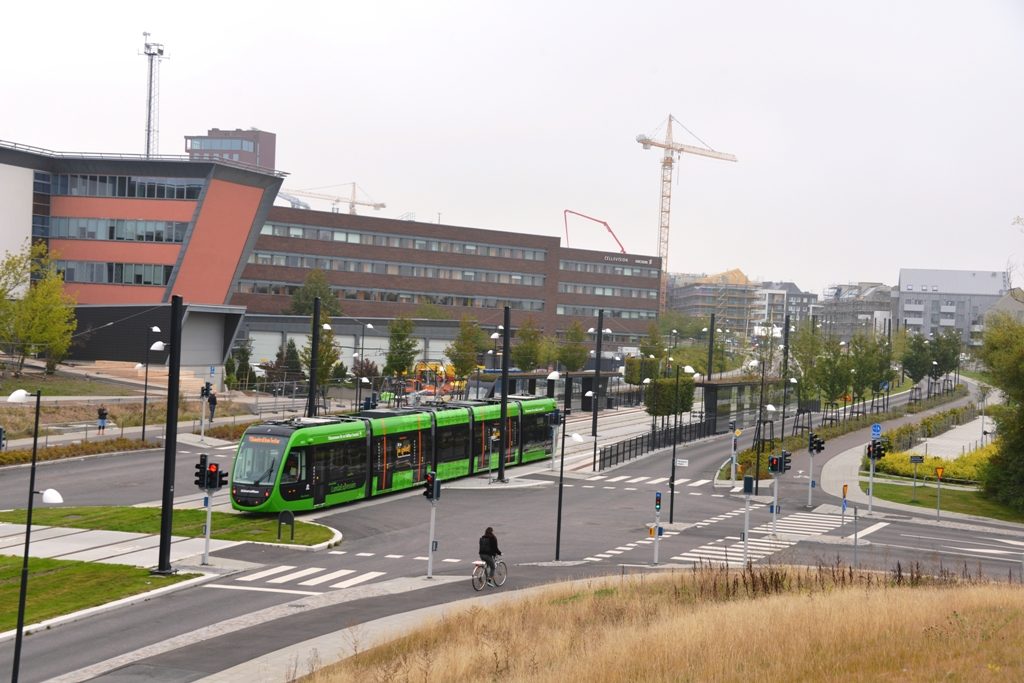

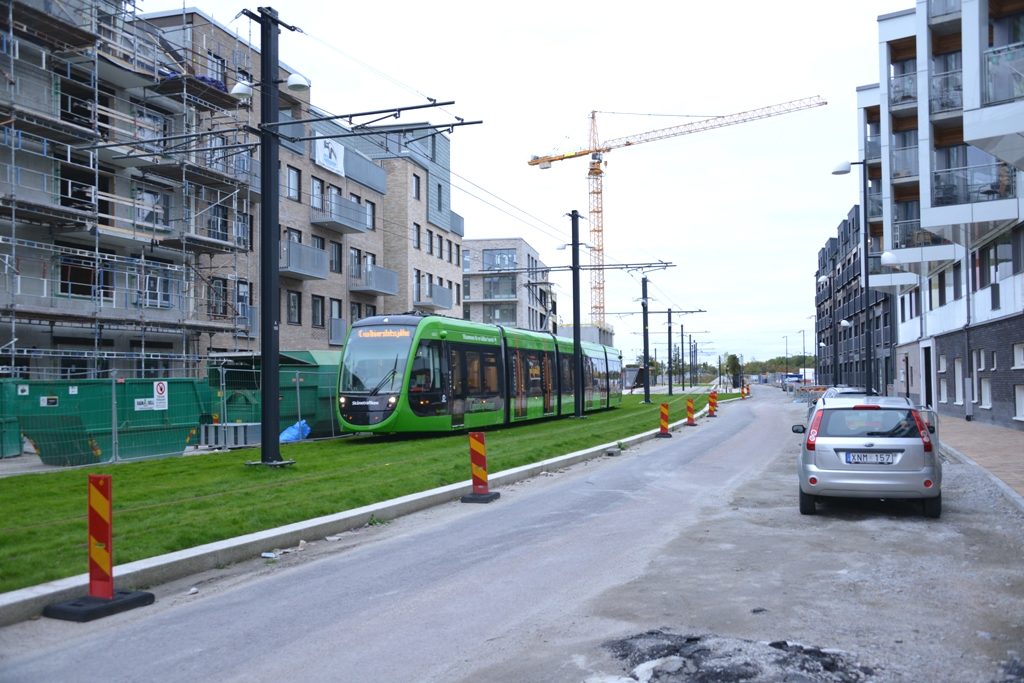
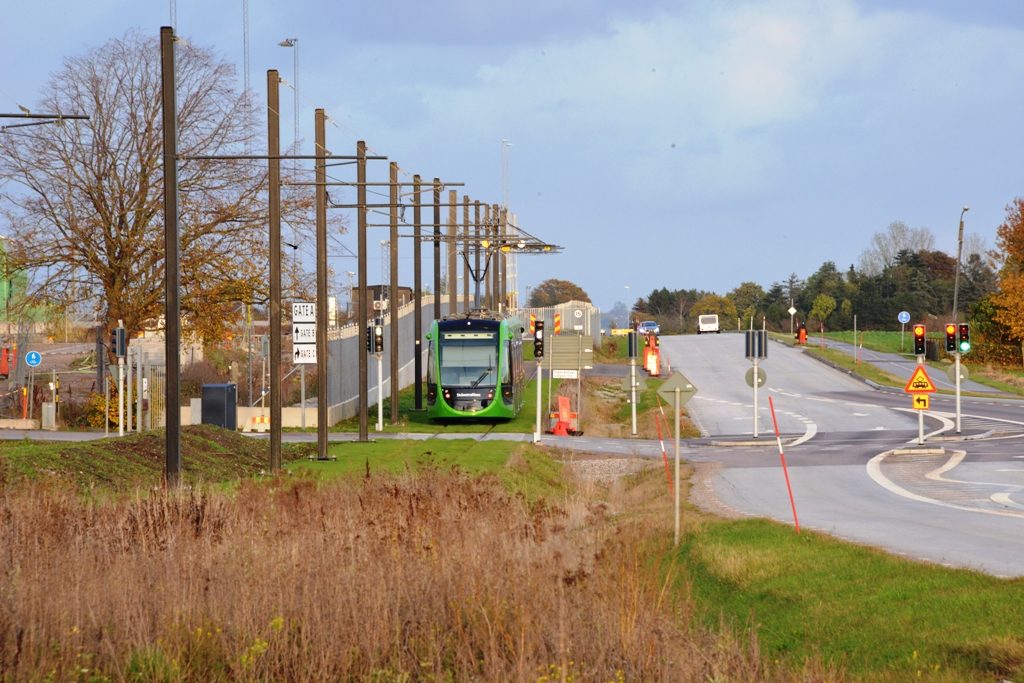
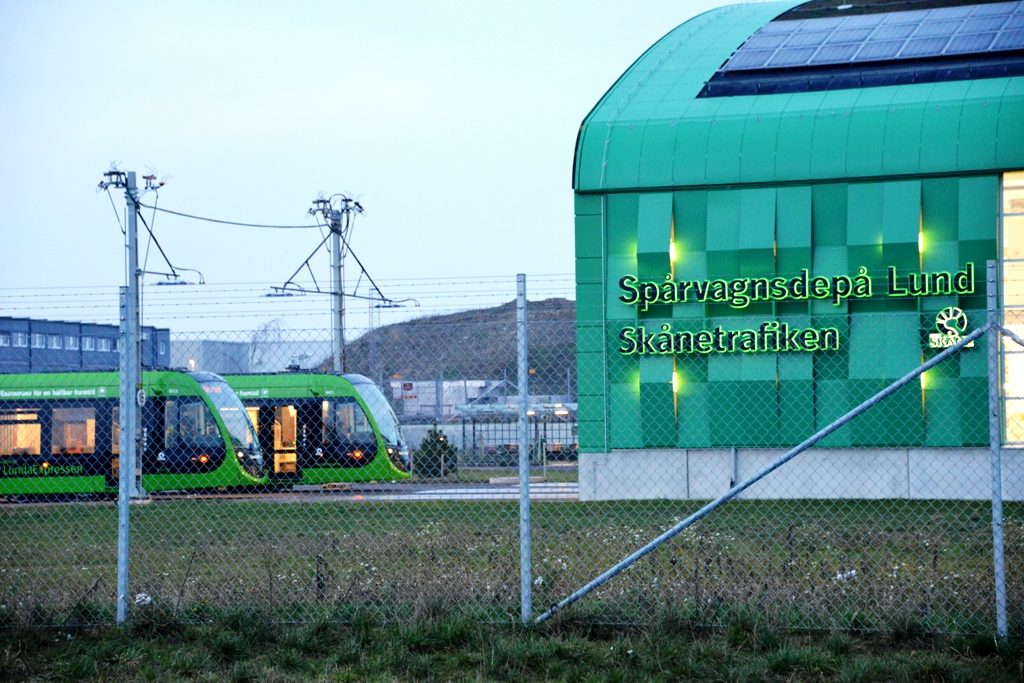


Absolutely excellent.